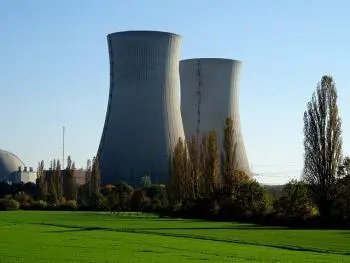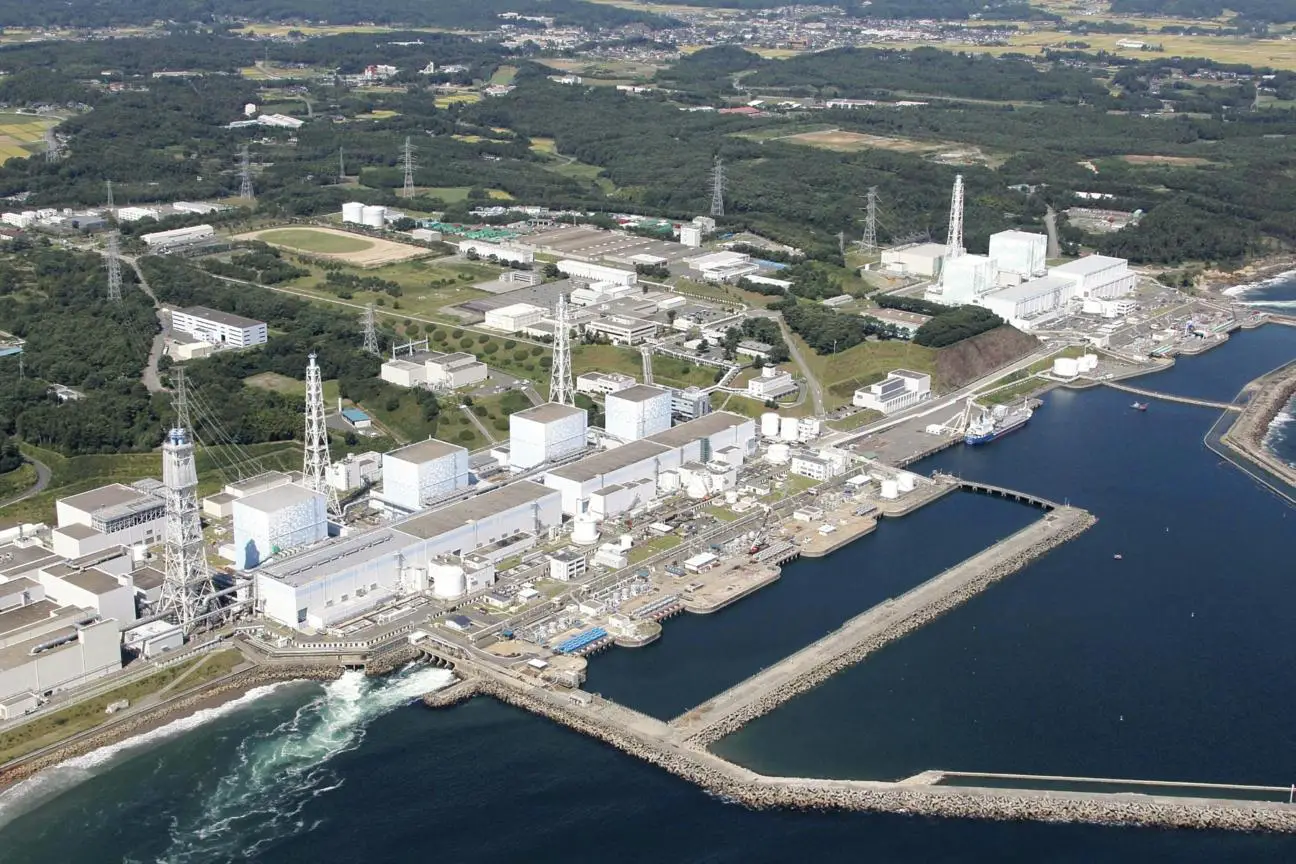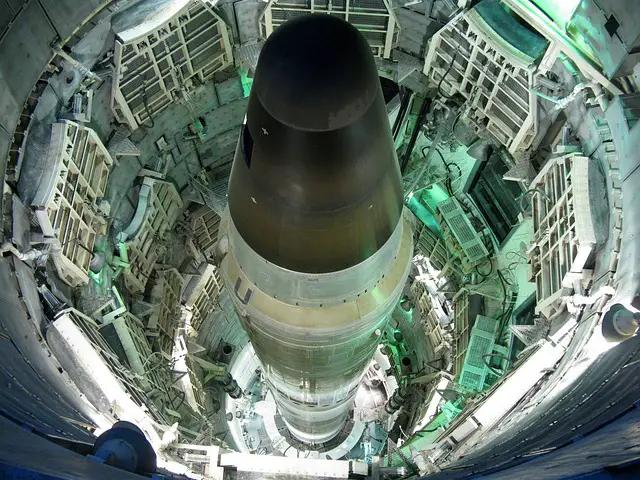
Nuclear fission is a powerful and versatile phenomenon that has left an indelible mark on modern science and technology. From electrical power generation to medicine and space exploration, nuclear fission has proven to be a key driver of innovation.
Below I show you different applications that use nuclear fission with some examples of each:
Example 1: Generation of electrical energy
One of the most notable examples of nuclear fission is its use in the generation of electrical energy in nuclear power plants. These facilities take advantage of the immense amount of energy released during fission to produce electricity efficiently and continuously.
 In a nuclear power plant, a nuclear fuel, such as uranium-235 or plutonium-239, is used as fissile material. When these nuclei capture neutrons, they become unstable and split into two or more smaller fragments.
In a nuclear power plant, a nuclear fuel, such as uranium-235 or plutonium-239, is used as fissile material. When these nuclei capture neutrons, they become unstable and split into two or more smaller fragments.
This process releases a large amount of energy in the form of heat. This heat is used to heat water and produce steam, which in turn drives turbines connected to electric generators. The result is the production of electricity on a large scale.
Example
The Fukushima Daiichi nuclear power plant in Japan, before the tragic accident in 2011, generated approximately 30% of the electricity in the Tohoku region. This example illustrates the critical importance of nuclear fission in large-scale power generation.
Example 2: Space propulsion
Nuclear fission has also been explored as a promising option for spacecraft propulsion. The high energy released by fission could allow spacecraft to travel at much higher speeds and explore distant destinations in space.
Nuclear propulsion in space is based on the idea of using a nuclear reactor on board a spacecraft to heat and expel propellant, such as hydrogen, through a propulsion engine. The energy released by fission is used to heat this propellant to extremely high temperatures, creating a high-speed exhaust jet that propels the craft forward.
Example
NASA's Orion project is a key example of a nuclear propulsion system that could significantly shorten interplanetary travel times. This technology could pave the way for manned missions to Mars and beyond.
Example 3: Production of radioisotopes
Nuclear fission is used to produce radioisotopes, which have a variety of medical, industrial, and scientific applications. For example, the radioisotope technetium-99m is used in nuclear medicine for diagnostic imaging.
Radioisotopes are unstable atoms that emit ionizing radiation. This radiation is used in medical applications to diagnose diseases and in therapies to treat certain types of cancer. Controlled production of radioisotopes in nuclear reactors is critical to ensuring a constant and reliable supply of these vital materials.
Example
Technetium-99m is essential for medical procedures such as bone scans, which help doctors diagnose bone diseases and assess thyroid gland function.
Example 4: Nuclear weapons
 While this is a controversial example, nuclear fission has also been used in the manufacture of nuclear weapons. These weapons take advantage of the extremely powerful release of energy that occurs during fission to cause devastating explosions.
While this is a controversial example, nuclear fission has also been used in the manufacture of nuclear weapons. These weapons take advantage of the extremely powerful release of energy that occurs during fission to cause devastating explosions.
Fission-based nuclear weapons work by creating an uncontrollable chain reaction in which a series of uranium-235 or plutonium-239 nuclei split and release a massive amount of energy in the form of a nuclear explosion. This type of weapon has devastating destructive power and has led to international efforts to limit its proliferation.
Example
The development of the atomic bomb within the Manhattan Project led by physicist Robert Oppenheimer was the first example of nuclear fission being used to create a bomb. The atomic bombing of Hiroshima and Nagasaki during World War II tragically illustrates the destructive impact of fission-based nuclear weapons.
Detonation of an atomic bomb
Atomic bombs use nuclear fission to release a huge amount of energy in a short period of time. Uranium-235 or plutonium-239 fission, releasing neutrons that in turn induce further fissions, creating an uncontrolled chain reaction and releasing a devastating explosion.
Example 5: Natural nuclear reactions on Earth
In certain places on Earth, such as the Oklo deposit in Gabon, a natural spontaneous nuclear reaction has been discovered that occurred approximately 2 billion years ago.
This type of natural fission occurs when geological conditions allow a nuclear reactor to remain self-sustaining for a long time.
Example 6: Nuclear research
Nuclear fission also plays a crucial role in scientific research. Particle accelerators and research reactors use fission to study the structure of matter and perform controlled nuclear experiments.
Research reactors are facilities specifically designed to conduct controlled nuclear experiments. These reactors are used in a wide variety of fields, from particle physics to medical research and the generation of isotopes for industrial and medical applications.
Example
The Large Hadron Collider (LHC) at CERN uses accelerators that harness the principles of nuclear fission to collide subatomic particles and study fundamental physics.
Example 7: Obtaining plutonium from uranium
In a nuclear reactor, uranium-238 (U-238), which makes up the majority of natural uranium, is not fissile by itself. However, when uranium-238 captures a neutron during the nuclear fission process, it transforms into uranium-239. This isotope is unstable and, through a series of beta decays, it converts to neptunium-239 and then to plutonium-239 (Pu-239), a fissile isotope.
This process occurs continuously in the reactor, and the plutonium-239 generated can participate in fission reactions, releasing a large amount of energy.
Plutonium-239 obtained in this way is crucial for both nuclear reactors and the production of nuclear weapons. In reactors, plutonium-239 can be used as nuclear fuel, as it is also fissile, allowing for the generation of more energy. In the military field, this isotope is valuable because it is used in the manufacture of nuclear weapons due to its ability to release energy in a nuclear chain reaction.